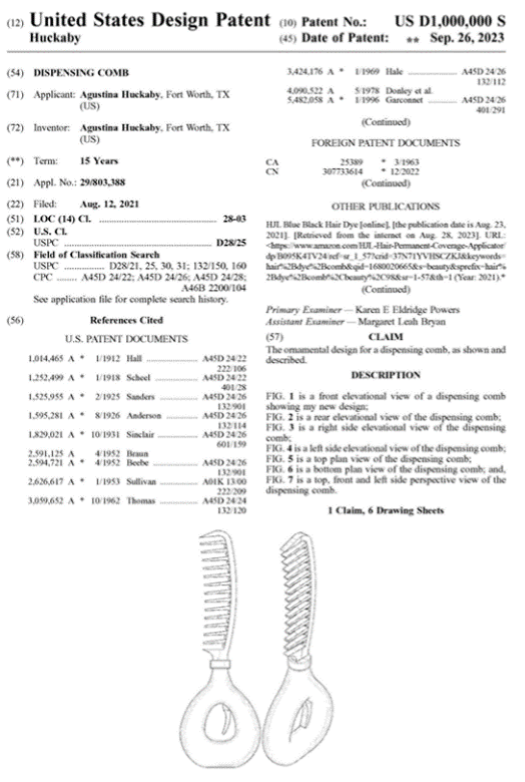Federal Circuit Agrees with TTAB that SPARK LIVING and SPARK are Likely to Be Confused
“[A]n additional word or component may technically differentiate a mark but do little to alleviate confusion.” – Federal Circuit
Trademark applicant Charger Ventures LLC has lost its appeal to the U.S. Court of Appeals for the Federal Circuit (CAFC) from the Trademark Trial and Appeal Board’s (TTAB’s) finding that SPARK LIVING is likely to be confused with an earlier-registered mark, SPARK. The precedential decision was authored by Judge Reyna.
Both marks cover real estate services, but Charger amended its application to specify residential real estate services, whereas the earlier mark specified services related to commercial real estate property. Charger also disclaimed the term “LIVING” in response to the examiner’s request. However, the examiner ultimately issued a final office action refusing the application on the grounds that “a comparison of the respective marks show[s] that they are comprised either in whole or significant part of the term ‘SPARK,’”…and both marks are for real estate services, with ‘overlapping identifications of leasing and rental management services.’” On appeal to the TTAB, the Board upheld the examiner’s refusal.
Dupont Analysis
The TTAB employed the five “Dupont factors” to assess the likelihood of confusion between the marks, first finding that evidence of third-party registrations from the trademark search system presented by the examiner that showed residential real estate services and commercial real estate services ‘may emanate from a single source under a single mark,’” had “some probative value” and was ultimately sufficient to show relatedness of the services. The Board next considered the trade channels in which the services would be marketed, and found the examiner had provided evidence that there is “some overlap” in commercial and residential real estate trade channels. Third, the Board considered the conditions of sale and found that even though the services offered are not “average consumer services,” “even careful or sophisticated purchasers are not immune from source confusion” and thus the classes of consumers may overlap. On the fourth factor, the strength of the mark, the TTAB was not persuaded by Charger’s evidence that the mark SPARK is conceptually weak because “even weak marks are entitled to protection,” though it did find some commercial weakness in the mark. And finally, the Board found when assessing the similarity of the two marks that SPARK is the term most likely to be remembered by consumers and that LIVING was subordinate to SPARK as it was disclaimed and descriptive of real estate services. Thus, the TTAB found SPARK LIVING to be “overall very similar to SPARK” and said that the “differences between the marks ‘do not outweigh the strong similarities’ when evaluated as a whole.”
Additional Words Don’t Always Help Confusion
In its review, the CAFC noted that it is not the court’s job to reweigh the evidence considered by the TTAB, as Charger essentially requested. Instead, the CAFC reviewed the Board’s factual findings for substantial evidence and found that the TTAB’s decision was supported under that standard on all points. Charger argued that the Board’s decision to give no meaningful weight to the term “LIVING” amounted to dissection of the mark, which is prohibited by CAFC precedent, but the court disagreed and said the Board did consider the mark as a whole, but the fact remains that “an additional word or component may technically differentiate a mark but do little to alleviate confusion.” The court similarly agreed with the TTAB’s analysis of the remaining factors and noted that “an ex parte proceeding ‘is not the proper forum’ for a trademark applicant to launch an attack on a registered mark to try to narrow the scope of services described” when addressing Charger’s claims of commercial weakness.
Less than Clear, But OK
Charger separately charged that the TTAB failed to indicate the weight it gave to each Dupont factor and that its analysis thus lacked substantial evidence. The CAFC conceded that “it is important to our review that the Board itself weigh the DuPont factors used in its analysis and explain the results of that weighing,” but ultimately determined, quoting from Motor Vehicle Mfrs. Ass’n of U.S., Inc. v. State Farm Mut. Auto. Ins. Co., that it could “uphold a decision of less than ideal clarity if the agency’s path may reasonably be discerned.”
Image Source: Deposit Photos
Image ID: 254654172
Author: NiroDesign
Eileen McDermott
Eileen McDermott is the Editor-in-Chief of IPWatchdog.com. Eileen is a veteran IP and legal journalist, and no stranger to the intellectual property world, having held editorial and managerial positions at […see more]






